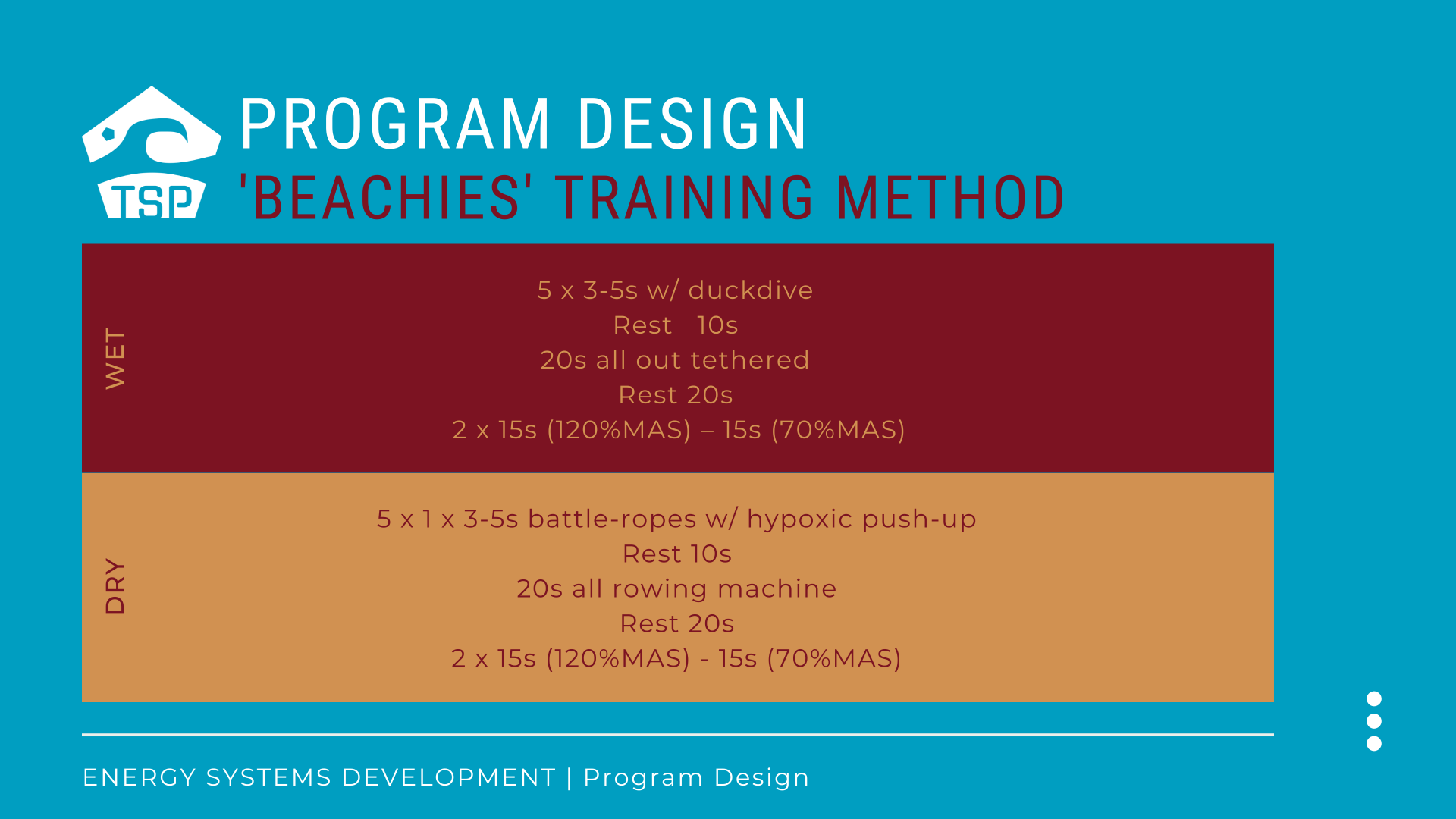How to train to get the most out of your surfing
Aug 16
/
Pere Campistol Agustí & Dr. Steven Duhig
SURFING is one of the world’s most enjoyable sports, being extremely popular as both a profession and recreational activity. However, it is also considered one of the most physically demanding. While surfing has a cool and laid-back approach from the outset, competing at the elite level requires your body to be in peak physical condition – and it doesn’t just involve surfing waves. For many, a surfing lifestyle seems easy where you spend as much time in the water as possible.
While important, more research has gone into training approaches outside of the water to increase the performance of elite surfers. Understanding effective training approaches to surfing will help surfers achieve more in the water and help prevent injuries associated with the sport.
SHOULD A SURFER LOOK BEYOND THE WATER AND SPEND TIME IN THE GYM OR GOING FOR A RUN?
Absolutely 100% for getting in the gym but a BIG ‘it depends’ for the run. We know the numerous benefits associated with strength and power training, not only for performance but also injury prevention – so this type of cross-training will allow you to surf better and more often. Now, running is a great form of exercise and we don’t deny is also a fantastic way to clear the head BUT long distance running will likely increase ankle stiffness which isn’t desirable for surfing – probably no harm if you’re going for a couple of 4-5km runs each week but just be mindful. If you’re trying to improve your fitness, then we’d suggest focussing on the energy systems and mode of exercise related to surfing. For example, we’ve got a sweet little drill called ‘Beachies’, which is geared toward what you might experience when paddled out at a beach break, it involves:

5 x 5s paddling/swimming efforts then duck dive
Rest 10s
20s all out tethered paddling/swimming
Rest 20s
2 x 15s (120% MAS), 15s (70% MAS)
The MAS is the mean aerobic speed determined from a 400m time trial. You divide 400m by the time taken to complete (in seconds) then calculate either 120% or 70% of this value. (e.g. 400m time =380s, MAS = 400m/380s = 1.05m/s).
WHAT ARE SOME TRAINING SPECIFICS SURFERS SHOULD CONSIDER?
One of our pillar courses, the Surf Foundation Specialist, focuses on 5 foundational aspects when developing/ensuring our surfers meet an adequate level for their goals/aspirations:
Breathing techniques – How we breath (mechanics), utilise diaphragmatic an intra-abdominal pressure for trunk stability purposes, respiratory muscle training to reduce metaboreflex (i.e. Improved paddling endurance), up and down regulation of psychological and physiological states using different breathing techniques and surf specific breath hold drills.
Mobility and stability – Do our surfers have the required range of motion to perform well? We identify potential mobility and stability issues that may compromise performance. For instance, a surfer may have good chest flexibility, but they also need to be able to control the shoulder through circumduction due to have to control the board when propelling through the water (reduce surfboard drag).
Energy system development – We make sure we’ve prepared our surfers for worst case scenarios. You can use your own experience in addition to the scientific literature to decide which energy system you should target. This component is especially important for those not fortunate to live a stone’s throw from the surf – be sure to get wet and train with the right mode of exercise to prepare for your next surf trip.
Resistance training – Don’t worry about trying to look like Hercules. You should be aiming to get a strong relative pull up (females>1.3; males>1.4 – relative pull up formula = (external load + bodyweight)/ bodyweight) to improve paddling and shoulder health. Strong and power legs will also improve your wave speed and throwing buckets of spray, squat and countermovement jumps and isometric mid-thigh pulls have been associated with higher scores in competition.
Paddling technique – We recognise that everyone has their own style but there are certain aspects of paddling technique that will make this strenuous activity, easier. Make sure you focus on minimising drag (mobility and stability can assist this) which is easily done by correct board positioning and ensuring you direct your force generation in a horizontal manner (pull the water to your toes, don’t push it to the floor).
HOW DOES A SURFER BETTER MANAGE THEIR RECOVERY AND INJURY PREVENTION? IS STRETCHING AND STRENGTH TRAINING THE KEY?
We encourage the 4 R’s; refuel, rehydrate, rest and regenerate. It is also worthwhile you implement a surfer monitoring system, accurately track training and surfing loads (e.g. training volume, session RPE and surf duration). Be willing to adjust daily training intensity or volume or even allow a day of complete rest when performance declines or the surfer complains of excessive fatigue, establishing open lines of communication is key to receiving this information. Be sure to individualise your programs as we all respond differently.
DOES A SURFER BENEFIT FROM FLEXIBILITY AND MOBILITY (E.G. PILATES OR YOGA) TO HELP MANAGE INJURY PREVENTION?
Injury prevention is a tricky one given its multifaceted nature. We’d suggest injury prevention should be approached using ‘Goldilocks zone’, if there’s not enough or too much flexibility/ mobility then you likely increase the risk of injury. Our advice is to know the demands of the surfing such as required joint range of motion and angles which require strength. For instance, can they get in to (mobility) and out of (strength) a deep squat with a dorsiflexed ankle, flexed knee, internally rotated and flexed hip and flexed trunk.

NEED HELP WITH UP-SKILLING YOUR COACHING?
Our core certifications include the SFS (Surf Foundation Specialist) and the SPS (Surf Performance Specialist) which will provide you with a structured training system to enhance surfer’s competence, stability, mobility, strength, power and agility. Access our complete guide to surf training, become a certified coach and start learning today by clicking here.
Write your awesome label here.
Join Waiting List!
Drop your email below, and we’ll keep you updated on everything about the launch of Power Surfer—the ultimate 12-month online strength training program for surfers.
Empty space, drag to resize
Thank you!

